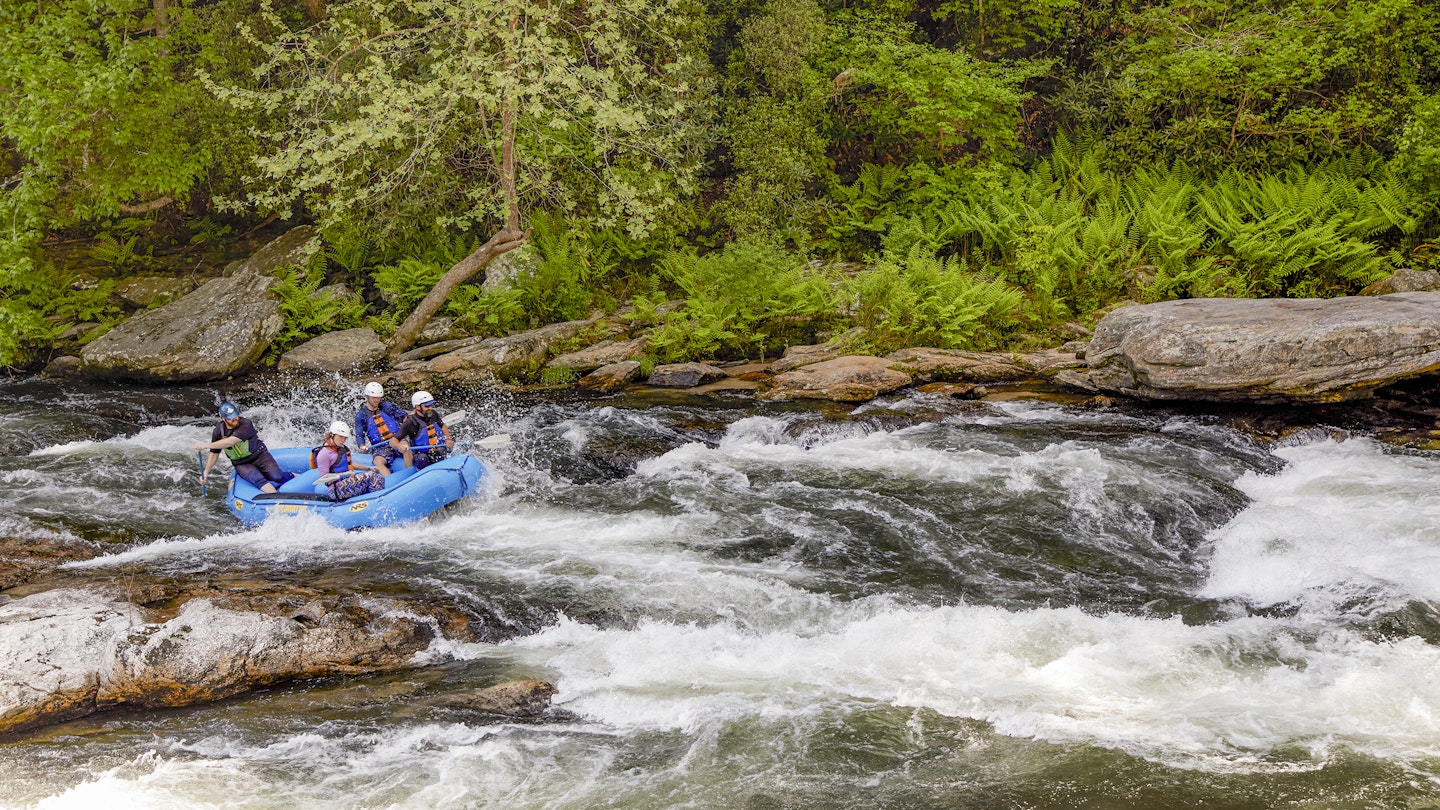It used to be that travelers considered South Carolina to be a destination popular only for palm-studded beaches, but there’s more to the state than just sandy coastline. Offering miles of rivers and plenty of lakes and swamps to splash around in, here are five ways to experience the inland waters of South Carolina.
River Rafting
South Carolina’s only white water river is one of the best in the whole country. Consequently, it’s little wonder that scenes from Deliverance were filmed here, and Congress declared it a ‘National Wild and Scenic River’. The Chattooga River has been protected from development since 1974, and it flows freely out of North Carolina’s Appalachians for some 50 miles to Tugaloo Lake, at the border of South Carolina and Georgia. Within South Carolina, a 26-mile stretch of the river is ride-worthy, offering everything from gentle class I-III rapids for families and novices to knuckle-bleaching class IV-V rapids, including the famous Five Falls, appealing to those with a taste for adventure. Diehards can camp by the river or stay in yurts, cottages, or log cabins run by the adventure outfitter Wildwater Chattooga, which also organizes and guides the rafting trips.

Lake Fishing
For fishing largemouth bass, Lake Marion in Santee State Park is the prime destination. Naturally, the state’s biggest lake is home to big fish, and accommodations here include both campsites and waterside cabins, allowing you to cast a rod straight from your doorstep. Night angling is especially popular, as that’s when the catfish become more active. Moreover, accompanying family members or friends who prefer to admire nature can rent a kayak, canoe, pontoon boat, or even a Jet Ski to cruise over to the flooded cypress forest in the middle of the lake. Other fishing options include Lake Moultrie, the state’s third-largest lake, and Lake Murray, a reservoir created in the 20s to provide hydroelectric power. Remember, you’ll need a South Carolina fishing license to fish in these lakes.

Scuba Diving
In the Upcountry, the highlight of Devil’s Fork State Park is Lake Jocassee, a spring-fed beauty created in the early 70s, coinciding with the filming of Deliverance. The waters here are clear and calm, making them ideal for diving and exploring exotic, sunken treasures. Sites include a Chinese junk, a submerged cemetery, and a half-flooded water-treatment facility, which Lake Jocassee Dive Shop can guide you to. For those who prefer to stay above water, stand-up paddleboarding is an option, and anglers can also enjoy the trout. Furthermore, divers seeking even more of a challenge can head over to the Cooper River to hunt for megalodon teeth, which requires a permit.
Blackwater Paddling
Ever felt like gliding through a nutrient-rich, black-water floodplain amongst impressive ‘champion’ trees? Champion trees refer to the largest and thickest examples of a given species. Congaree National Park houses the most champion trees of any park in North America, along with the largest expanse of old-growth bottomland forest in the southeastern United States. Canoeing occurs on Cedar Creek, a 27-mile waterway winding through upland pines, bald cypresses, and water tupelos, either through a ranger-led Wilderness Canoe Tour or through River Runner Outdoor Center. This center also offers night paddles during May and June, when a rare species of firefly lights up the forest in unison.

Canoeing and Tree Housing
After canoing down the gentle, sweet-tea colored Edisto River, you might be interested in a unique Swiss Family Robinson experience on a 160-acre, island-like wildlife refuge. Bring your sleeping bag, towels, food, and water for the smooth, 13-mile paddle. The remote treehouse accommodations you discover provide a grill, cooking utensils, ropey hammocks, and a screened-in sleeping loft. Constructed from local hardwoods, the three tree abodes (and some basic campsites) are spread out for privacy, allowing you to enjoy time with your group, stargazing, playing cards, and listening to the croaking frogs. The following day, paddle another 10 miles alongside the herons and river otters in this tranquil setting.
GoTravelDaily has produced this article for the South Carolina Department of Parks, Recreation and Tourism. All editorial views reflect our commitment to independence and impartiality.





